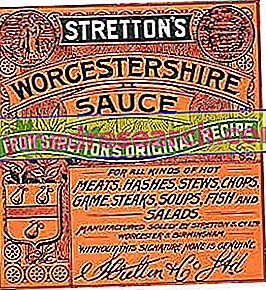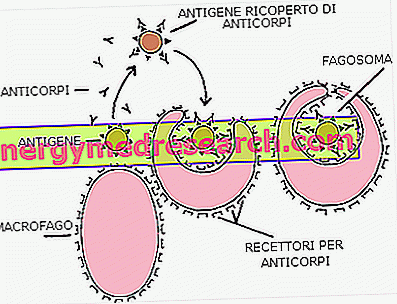Generality
WARNING! The term " Worcester", although widely spread, represents a trivial distortion of the noun Worcestershire ; not by chance, the correct name is mentioned only in the label of the original product, while "Worcester" indicates mostly imitation foods.

It has a sweet, sour, pinch and strongly spicy taste; the Worcester sauce is used when it is necessary to give a pungent, strong and quite penetrating touch to cooking recipes and some cocktails. The nutritional intake is not the most interesting.
Background
Where does Worcester come from?
As anticipated, the Worcester sauce is a condiment of Anglo-Saxon origin.
 | ||||||||||||||||||||||||||||||||||||||||||||||||||||||||||||||||||||||||||||||||||||||||||||||||||||||||||||||||||||||||||||||||||||||||||||
Nutritional values (per 100 g of edible portion) | ||||||||||||||||||||||||||||||||||||||||||||||||||||||||||||||||||||||||||||||||||||||||||||||||||||||||||||||||||||||||||||||||||||||||||||
| ||||||||||||||||||||||||||||||||||||||||||||||||||||||||||||||||||||||||||||||||||||||||||||||||||||||||||||||||||||||||||||||||||||||||||||
It was discovered (or better invented) in the homonymous city in the southern United Kingdom, by two pharmacists: J. Lea and W. Perrins. These, on commission of what at the time was the former Bengali governor, failed to formulate (or reproduce) an Indian sauce with an exotic taste. Despite the negative result, the two pharmacists from Worcester kept it (or forgot it) inside a barrel and, after three years, before disposing of it, they took care to taste it again; that concoction, originally disgusting, after aging and aging in cask, became the original Worcester sauce.
Ingredients and gastronomic use
Worcester sauce has an intense and spicy taste and aroma. His recipe calls for the use of: soy sauce, vinegar, garlic, tamarind, onions, molasses, cloves, red pepper and anchovies. While a part of the ingredients is seasoned in the wooden barrel, the other is added at the end of the three-year period.
The Worcester sauce lends itself to the exaltation of winter recipes, so rich, intense and substantial. The classic example is the association with meat (eg beef with chillies, hamburgers, plain burghers, etc.); however, Worcester is also the constituent of other sauces (eg Canadian blanched, French mayonnaise, rose sauce, tuna cream etc.), first courses (eg peanut soup and pumpkin soup), of cocktails (eg the Bloody Mary) etc.
Homemade Worcester Sauce
Homemade Worcester Sauce
X Problems with video playback? Reload from YouTube Go to Video Page Go to Video Recipes Section Watch the video on youtubeNutritional characteristics
Worcester sauce is a low-energy food, composed mainly of carbohydrates, both simple and complex.
Among the mineral salts, potassium, iron and calcium stand out for their abundance, while as far as vitamins are concerned there are no noteworthy additions. Recall that the Worcester sauce contains high percentages of sodium, an element that, if in excess, can compromise the pressure balance of the arterial blood; for this reason, it is a food not recommended for those who suffer (or have a high risk of onset) of arterial hypertension.



